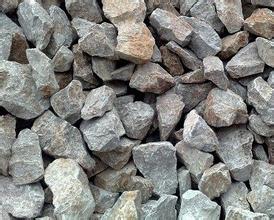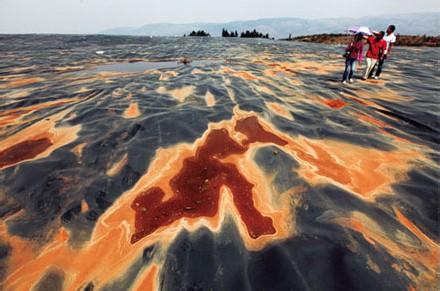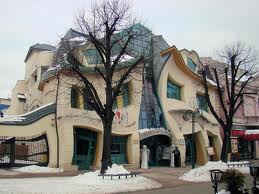Antimony
History of antimony
Antimony minerals, particularly stibnite, have been known and used since ancient times. Because it is so soft, stibnite was used in ancient times as  black eye makeup. The Roman historian, Pliny, wrote about its use as a medicine. Artists used finely-ground stibnite in the Middle Ages as a black pigment. Ancient “scientists” were interested in antimony because of their belief that it may be useful in the process of changing common metals into gold. This field was known as alchemy.
black eye makeup. The Roman historian, Pliny, wrote about its use as a medicine. Artists used finely-ground stibnite in the Middle Ages as a black pigment. Ancient “scientists” were interested in antimony because of their belief that it may be useful in the process of changing common metals into gold. This field was known as alchemy.
What is antimony
Antimony is a native element,antimony metal is extracted from stibnite and other minerals. Antimony is used as a hardening alloy for lead, especially storage batteries and cable sheaths, also used in bearing metal, type metal, solder, collapsible tubes and foil, sheet and pipes, and semiconductor technology.
Application of antimony
 The most important use of antimony is in chemicals used to impregnate plastics, textiles, rubber, and other materials as a flame retardant – that is, a form of fireproofing.Over half the annual U.S. antimony consumption is for the manufacture of flame retardants.
The most important use of antimony is in chemicals used to impregnate plastics, textiles, rubber, and other materials as a flame retardant – that is, a form of fireproofing.Over half the annual U.S. antimony consumption is for the manufacture of flame retardants.
Antimony is mixed with other metals and turned to alloyed,such as lead, to make the lead harder and stronger for use in lead-acid batteries.On the other hand,some alloys such an an alloy of antimony,tin,copper,and sometimes lead are useful as machine bearings because they are soft and slippery.Antimony is also alloyed with tin to make pewter items such as plates, pitchers and cups, used mostly for decoration.
Antimony is also used for pigments in plastics, paints, rubber and for a wide variety of minor uses, including medicines, fireworks, and others. Antimony oxide is a brilliant yellow color, accounting for much of the pigment use.Stibnite is used for metal antifriction alloys, metal type, shot, batteries, and in the manufacture of fireworks. Antimony salts are used in the rubber and textile industries, in medicine, and glassmaking.
Sources of antimony
Most of the antimony mined each year comes from China, which supplies over three-quarters of the world total. The remainder is from Russia, South Africa, Tajikistan, Bolivia, and  a few other countries. Some antimony is produced as a by-product of smelting ores of other metals, mainly gold, copper and silver, in countries such as the United States, Canada, and Australia.
a few other countries. Some antimony is produced as a by-product of smelting ores of other metals, mainly gold, copper and silver, in countries such as the United States, Canada, and Australia.
Arsenic
Brief look of Arsenic
Arsenic is a toxic and known to metals, and there are many allotropes. Arsenic widely found in nature, there are hundreds of species of arsenic minerals have been found.Because  of weak bonding between the layers, gray arsenic is brittle and has a relatively low Mohs hardness of 3.5.
of weak bonding between the layers, gray arsenic is brittle and has a relatively low Mohs hardness of 3.5.
Arsenic metal very rarely occurs in its pure form in nature. The most common arsenic mineral is arsenopyrite, a compound of iron, arsenic, and sulfur. Several other, less-common minerals contain arsenic, including orpiment, realgar, and enargite, which are arsenic sulfides.
Application of Arsenic
 Arsenic and its compounds are used in pesticides, herbicides, pesticides and many kinds of alloys.Formerly the most important use of arsenic compounds, was as an insecticide sprayed in fields and orchards.
Arsenic and its compounds are used in pesticides, herbicides, pesticides and many kinds of alloys.Formerly the most important use of arsenic compounds, was as an insecticide sprayed in fields and orchards.
Only about 5% of arsenic consumption is of the metallic element. Most of this is used to alloy (mix) arsenic with lead, copper, or other metals for specific uses.As a metalloid, arsenic is a semiconductor, like silicon.This means it conducts some electricity like a metal,but not all the electricity a true conductor like copper would conduct. Consequently, about 1/10 % of arsenic is consumed in the manufacture of gallium arsenide semiconductors for use in electronics. Some arsenic is also used in glass-making.
Source of Arsenic
Significant quantities of arsenic are associated with the copper-gold deposits in Chile, the Philippines, and many other countries. However, many countries produce by-product 
arsenic from smelting of metal ores. China is by far the largest producer, with Chile, Mexico, and Peru also important, and lesser production from about a dozen other countries
with metal smelters.
Concrete
Concrete overview
Concrete is defined by the cementitious material aggregated into the overall project cemented composite material collectively.Concrete is commonly  used as a cementitious material with cement,sand,stone for aggregate and with water,additives and admixtures certain proportion by mixing,forming,curing concrete derived, also known as ordinary concrete.It is widely used in civil engineering.
used as a cementitious material with cement,sand,stone for aggregate and with water,additives and admixtures certain proportion by mixing,forming,curing concrete derived, also known as ordinary concrete.It is widely used in civil engineering.
Concrete characteristics
 Concrete has the characteristics of abundant raw materials,low cost,simple production process.Thus the amount of it is increasing.Meanwhile,concrete also has a high compressive strength,durability,strength grade wide range of features.These features make use of a very wide range,not only to use in a variety of civil engineering,but also in the shipbuilding,machinery,marine development,geothermal projects,concrete material is also important.
Concrete has the characteristics of abundant raw materials,low cost,simple production process.Thus the amount of it is increasing.Meanwhile,concrete also has a high compressive strength,durability,strength grade wide range of features.These features make use of a very wide range,not only to use in a variety of civil engineering,but also in the shipbuilding,machinery,marine development,geothermal projects,concrete material is also important.
Concrete Category

Cement concrete is an artificial stone,using cement as cementing materials,mixing with water and coarse and fine aggregates and other materials,then obtained after pouring molding.New mixing unhardened concrete,typically a concrete mixture.There is a certain strength of hardened concrete, said hardened concrete.Usually refers to the concrete in pavement engineering,asphalt concrete is also a common concrete.
In addition, according to the compressive strength of concrete,it can be divided into: low-strength concrete (compressive strength less than 30MPa), medium-strength concrete (compressive strength 30-60Mpa) and high strength concrete (compressive strength greater than or equal 60MPa).Per cubic meters of cement can be divided into: lean concrete (cement content not exceeding 170kg) and rich concrete (cement content of not less than 230kg), etc.
Concrete applicationBecause very rugged durability of reinforced concrete structures,seismic,fire resistance,climate change and is easy to shape economic and other characteristics,it is widely used in building construction,bridges,paved roads,runways,railway sleepers,poles,retaining walls,retaining embankment,culverts,dams,water tanks,water towers,tanks, channels,ditches,piers,breakwaters,military bunkers,nuclear power plants and structures foundation piles,walls and other structures and so on.
Mica
Description Of Mica
Mica is a mineral name given to a group of minerals that are similar in their physical properties and chemical compositions. They are all silicate minerals, which means that chemically they all contain silica(SiO4). Mineralogists call micas sheet silicates because their molecules combine to form distinct layers. Mica crystals are six-sided. They are fairly light and relatively soft, at 2 to 4 on Mohs’ hardness scale for the univalent micas. Sheets and flakes of mica are flexible. Mica is heat-resistant and does not conduct electricity.
There are 37 different mica minerals. In addition to the silicate tetrahedrons in all micas,Purplelepidolite contains the elements potassium, lithium, and aluminum. Black biotite contains potassium, iron, and magnesium. The two micas used as a commodity are: brown mica or phlogopite which contains iron and magnesium; and the “reddish, green, or white (or clear) mica” or muscovite which contains potassium and aluminum.
Application Of Mica
Micas commonly occur as flakes, books, or sheets. Sheet muscovite (white) mica is used in electronic insulators (mainly in vacuum tubes), ground mica in paint, as joint cement, as a dusting agent, in well-drilling muds, and in plastics, roofing, rubber, and welding rods.
a dusting agent, in well-drilling muds, and in plastics, roofing, rubber, and welding rods.
The principal use of ground mica is in gypsum wallboard joint compound, where it acts as a filler and extender, provides a smoother consistency, improves workability, and prevents cracking. In the paint industry, ground mica is used as a pigment extender that also facilitates suspension due to its light weight and platy morphology. The ground mica also reduces checking and chalking, prevents shrinkage and shearing of the paint film, provides increased resistance to water penetration and weathering, and brightens the tone of colored pigments. Ground mica also is used in the well-drilling industry as an additive to drilling “muds.”
Coarsely ground mica flakes help prevent lost circulation by sealing porous sections of the uncased drill hole. The plastic industry used ground mica as an extender and filler and also as a reinforcing agent. The rubber industry uses ground mica as an inert filler and as a mold lubricant in the manufacture of molded rubber products, including tires.
Sheet mica is used principally in the electronic and electrical industries. The major uses of sheet and block mica are as electrical insulators in electronic equipment, thermal insulation, gauge “glass”, windows in stove and kerosene heaters, dielectrics in capacitors, decorative panels in lamps and windows, insulation in electric motors and generator armatures, field coil insulation, and magnet and commutator core insulation. Mica is also used as segment plates between copper commutator sections to insulate copper from the steel; phlogopite mica is used because it wears at the same rate as the copper segments.
Sources Of Mica
Scrap and flake mica is produced all over the world. In the U.S., scrap and flake mica was produced in Arizona, North Carolina, South Dakota, Georgia, New Mexico and South Carolina. North Carolina’s production accounts for half of total U.S. mica production. The flake mica produced in the U.S. comes from several sources: the metamorphic rock called schist as a by-product of processing feldspar and kaolin resources, from placer deposits, and from pegmatites. Canada, India, Finland, and Japan export flake mica to the U.S.The United States has limited sheet mica resources. U.S. mining of sheet mica is costly and labor costs are high. As a result, the U.S. imports more than half its sheet mica from India, but also from Belgium, Germany, China, and a few other countries.
Limestone
Application of limestone
Limestone is a basic building block of the construction industry (dimension stone) and the chief materials from which aggregate, cement, lime, and building stone are made. 71%  of all crushed stone produced in the U.S. is either limestone or dolomite. As a source for lime, it is used to make paper, plastics,
of all crushed stone produced in the U.S. is either limestone or dolomite. As a source for lime, it is used to make paper, plastics,
The largest use of lime is in steel manufacturing where lime is used as a flux to remove impurities such as phosphorus and sulfur. Lime is used in power plant smokestacks to remove sulfur from the emissions. Lime is also used in mining, paper and paper pulp production, water treatment and purification, and in wastewater treatment. It is used in road construction and traditional building construction.glass, paint, steel, cement, carpets, used in water treatment and purification plants, in the processing of various foods and household items (including medicines).
Description of limestone
Lime is a general term used for various forms of a basic chemical produced from calcium carbonate rocks such as limestone (CaCO3) and dolomite (CaCO3*MgCO3). More  specifically, “quicklime” is calcium oxide (CaO) or calcium-magnesium oxide (Ca)*MgO). “Hydrated lime” (also called slaked lime) is produced by mixing the oxide forms with water. “Hydraulic lime” is an impure form of lime that will harden under water. “Dead-burned dolomite” is a special form of dolomitic lime used in refractories. Most lime is produced by calcining (burning) limestone or dolomite.
specifically, “quicklime” is calcium oxide (CaO) or calcium-magnesium oxide (Ca)*MgO). “Hydrated lime” (also called slaked lime) is produced by mixing the oxide forms with water. “Hydraulic lime” is an impure form of lime that will harden under water. “Dead-burned dolomite” is a special form of dolomitic lime used in refractories. Most lime is produced by calcining (burning) limestone or dolomite.
For example, if limestone is burned at 1010 to 1345 degrees C, the carbon dioxide is driven off and leaves calcium oxide or quicklime. In its purest form and under laboratory conditions, 100 kilograms of limestone will produce 56 kilograms of quicklime.
Sources of limestone
In the United States, lime is produced in a number of states. Companies in Texas, Alabama, Kentucky, Missouri, Ohio and Pennsylvania account for more than one-half of U.S. production annually. In addition, lime is imported from Canada and Mexico. Other nations producing lime include Belgium, Brazil, China, France, Germany, Italy, Japan, Poland, Romania, and the United Kingdom.Significant amounts of lime are recycled. Paper companies recycle large volumes of the lime they use. Some water treatment facilities recycle lime as well.
History of limestone
Lime has been used for thousands of years for construction. Archeological discoveries in Turkey indicate lime was used as a mortar as far back as 7,000 years ago. Ancient Egyptian civilization used lime to make plaster and mortar. In the United States, lime use has changed dramatically. In 1900, more than 80% of the lime used in the U.S. was for construction uses. Today, nearly 90% is used for chemical and industrial uses.






Recent comments